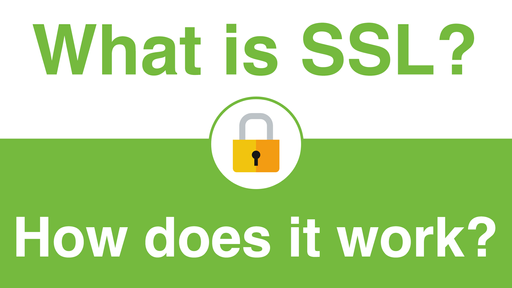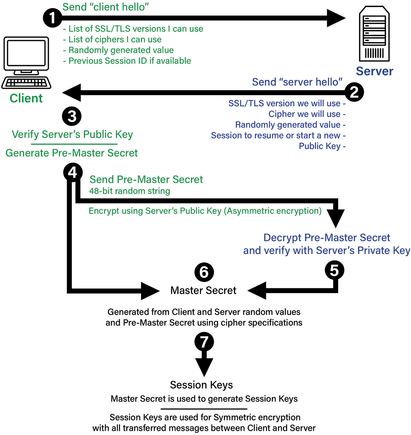Understanding SSL: A Comprehensive Guide
In this guide, we'll address common misconceptions about SSL certificates, explain what SSL is, how it relates to TLS (Transport Layer Security), and why SSL/TLS encryption is crucial for securing online transactions and protecting sensitive information. You'll also learn how SSL certificates work, the types available, and the steps for establishing a secure connection.
What is SSL?
SSL, or Secure Sockets Layer, was the original security protocol designed to create a secure, encrypted link between a web server and a user's browser. This SSL connection ensured that any data transmitted—whether login credentials, credit card information, or other sensitive data—was encrypted and secure from interception.
While SSL has been succeeded by TLS certificates (Transport Layer Security), it laid the groundwork for modern internet security. Hence, the term SSL certificate is still used to describe these digital certificates. These certificates enable a secure session between web servers and clients, allowing users to trust that the data they send and receive is encrypted and safe.
Encrypting data through SSL/TLS relies on public key cryptography. This involves a pair of encryption keys: a public key, which is shared openly, and a private key, which is kept secure on the server. The use of these keys helps establish a secure and encrypted link over the internet, which is why SSL protection remains fundamental to online security.

What is SSL? Lets go over it in a video presentation
How Does SSL/TLS Work?
The SSL/TLS protocol works through an authentication process called the SSL handshake. This handshake is responsible for creating a secure session between the web browser and the web server. Here's how it works in simplified steps:
- Client Hello: When a user visits a secure website, their browser initiates the process by sending a "hello" message to the server, including the supported encryption algorithms(also known as a cipher suite).
- Server Response: The server sends back its SSL certificate(which contains the public key) and chooses an encryption algorithm for communication.
- Certificate Verification: The browser verifies the SSL certificate to ensure it is valid and has been issued by a trusted Certificate Authority (CA).
- Key Exchange: The browser generates a session key, encrypts it using the public key from the certificate, and sends it to the server.
- Secure Session Established: The server decrypts the session key using its private key. Both the browser and the server now have a shared session key to encrypt and decrypt data securely for the duration of the session.
The SSL handshake process is rapid and generally seamless to the user, ensuring an encrypted connection that prevents third parties from accessing or tampering with the data. The padlock icon appearing in the browser address bar indicates an encrypted session and provides reassurance that TLS protection is active.

What is an SSL Certificate?
An SSL certificate is a digital certificate issued by a Certificate Authority (CA) that authenticates a website owner's identity and enables SSL/TLS encryption. This allows the web server to establish a secure and encrypted session with visitors' web browsers. Each certificate contains:
- The public key for data encryption.
- Certificate details, including the domain name and the organisation's information.
- The CA's digital signature, verifying the legitimacy of the certificate.
A Certificate Signing Request (CSR) must be submitted to a CA for an SSL certificate to be issued. Once validated, the CA signs the certificate, which can then be installed on the webserver to enable SSL protection.
SSL certificates are crucial for secure online transactions, protecting user privacy, and establishing trust. They activate https:// and the padlock icon in the address bar, signifying that the website is secure.
What are the Types of SSL Certificates?
There are different types of SSL certificates designed to meet varying security needs and validation levels:
Domain Validated (DV) Certificates
- Validation Process: Only verifies domain ownership.
- Use Case: Ideal for personal sites or blogs needing basic encryption.
- Security Level: Basic encryption; quickest to issue.
Organisation Validated (OV) Certificates
- Validation Process: Checks both domain ownership and business details.
- Use Case: Suitable for businesses needing more than just domain validation.
- Security Level: Higher assurance due to the organisation's identity being verified.
Extended Validation (EV) Certificates
- Validation Process: Extensive checks of legal, operational, and physical existence.
- Use Case: Best for e-commerce, banking, and sites requiring maximum trust.
- Security Level: The highest level of assurance, often displaying a green address bar in some browsers.
Wildcard SSL Certificates
- Validation Process: DV or OV can cover a domain and all its subdomains.
- Use Case: Perfect for securing multiple subdomains like blog.example.com and shop.example.com.
- Security Level: Simplifies security across subdomains with one SSL certificate.
Multi-Domain SSL Certificates (MDC)
- Validation Process: Secures different domain names.
- Use Case: Ideal for businesses with multiple unrelated domains, also known as Unified Communications Certificates (UCC).
- Security Level: Efficiently handles multiple domain names with a single certificate.
Single Domain SSL Certificates
- Validation Process: Secures only one domain.
- Use Case: Best for simple websites that only need security for one domain.
- Security Level: Provides protection for a single domain name.
The Importance of SSL: Security and Beyond
Understanding SSL/TLS is essential for anyone running a website. SSL certificates enable the authentication process of web servers, ensuring that the site is what it claims to be. Beyond that, they establish a secure, encrypted session that provides:
- Secure Server Communication: Encrypts datatransmittedbetween a user's browser and a server.
- Protected Transactions: Ensures the security of online transactions, making it difficult for sensitive information like credit card details and login credentials to be intercepted.
- Multi-Platform Security: Protects email exchanges and establishes encrypted links across different platforms, such as Microsoft Exchange servers.
At its core, the primary purpose of SSL/TLS is to create a secure pipeline for transferring encrypted data. By doing so, Certificate Authorities play a crucial role in verifying that a server is safe for sensitive exchanges—an essential function in today's digital landscape.
Is SSL Still Relevant?
SSL as a protocol is technically outdated, and most modern web browsers rely on the more advanced TLS transport layer security protocol. However, the term "SSL certificate" persists, although these certificates are technically TLS certificates. The use of TLS has strengthened encryption and increased security efficiency, ensuring that both web browsers and servers can maintain secure connections.
However, TLS protection requires careful implementation: secure keys, proper server configurations, and attention to avoid security errors.
As internet security continues to evolve, particularly with advancements like quantum encryption, understanding SSL/TLS fundamentals remains key to securing your online presence.
For TLS to be able to provide a secure connection, both the client and server systems, keys, and applications must be secure. In addition, the implementation must be free of security errors.RFC 5246

Conclusion: Securing the Modern Web
SSL encryption and TLS protection are essential for safe data transfer and secure communications. Website owners can establish secure sessions, protect user data, and build trust with visitors by choosing the correct SSL certificate.
Whether you use a single-domain certificate, a multi-domain SSL certificate, or a wildcard certificate, the goal is the same: to encrypt data and provide a secure and seamless user experience. As modern web browsers advance, a firm grasp of SSL/TLS is crucial for robust internet security, ensuring that your website and its users remain protected.
